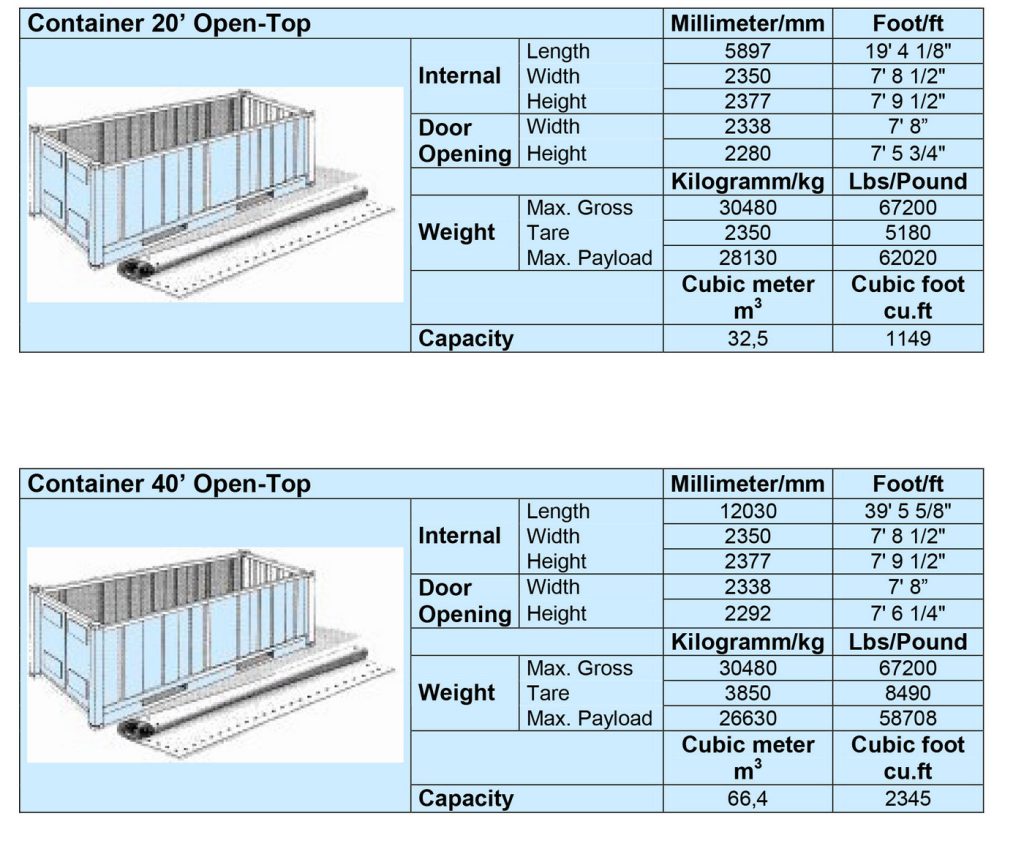The walls of open-top containers are generally made of corrugated steel. The floor is made of wood.
It has the following typical distinguishing structural features. The roof consists of removable bows and a removable tarpaulin. The door header may be swivelled out.
These two structural features greatly simplify the process of packing and unpacking the container. In particular, it is very easy to pack and unpack the container from above or through the doors by crane or crab when the roof is open and the door header is swivelled out.
It should be noted, however, that the purpose of the roof bows of an open-top container is not solely to support the tarpaulin but also to contribute to container stability. Flatracks are therefore more suitable for overheight cargoes.
Lashing rings, to which the cargo may be secured, are installed in the upper and lower side rails and the corner posts. The lashing rings may take loads of up to 1,000 kg.
The usual open-top container dimensions are 20′ and 40′.
Dimensions/weights
The following are some of the most important details relating to open-top container types. The data was taken from Hapag-Lloyd, Hamburg

Use
Open-top containers are used for all types of general cargo (dry cargo). Their principal uses are as follows:
packing and unpacking from above or through the doors by crane or crab
tall cargo
